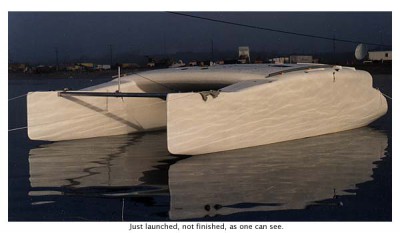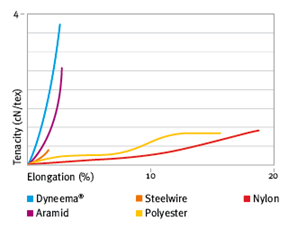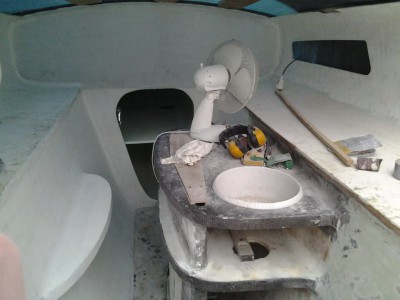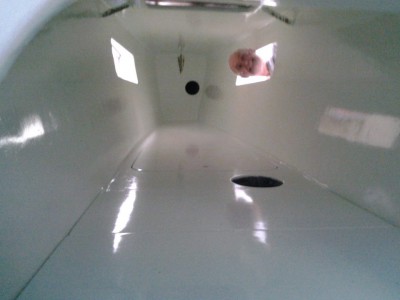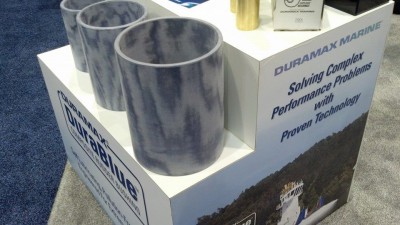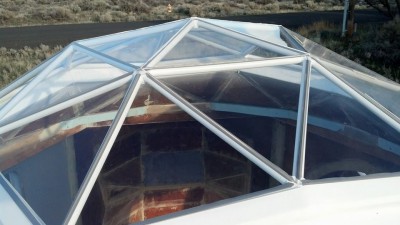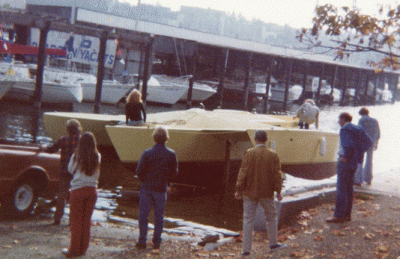I have a half dozen postings that I can think of, but I seem to be under multiple deadlines by everybody, so the postings have to wait. Maybe tomorrow or Friday.
Category Archives: New Designs
JD’s Launch Now On Youtubes!
Part 1. Of 3.
Jim Dory had his launch on VHS before, but he recently made it live there on the tubes. His 30′ CM catamaran. Up in Nome, Alaska.
https://www.youtube.com/embed/2A8Lo3QyYBQ
GRP Guru
Reminding everybody that my friend Andre is a composites resource and has classes available. Pretty cool he grabbed that website name too. http://www.grpguru.com/
Discontinued and Odd Lots Glass, Carbon, and the Fabric Whose Name Shall Not Be Spoken
Here is the first armload of fabric ends for my builders. Let me know if any looks like what you want.
| FABRICS INVENTORY OCTOBER 2014 | |||||
| PRODUCT | DESCRIPTION | AREAL WEIGHT | ROLL WIDTH | TOTAL WEIGHT | |
| FIBERGLASS | Rolls are typically between 150 and 250 lbs each with 9 rolls per pallet | ||||
| Roll price $0.75/lb Pallet price $0.50/lb | |||||
| X1300 | BIAX STITCHED+- 45° | 13 oz | 50 | > 5,000 lbs | |
| for Polyester/ Vinylester | |||||
| WF1800 | UNI 90° for EPOXY | 41 OZ | 50 | 1414 | |
| 500+ lbs rolls! | |||||
| C3000 | Uni stitched | 30 oz | 50 | 1403 | |
| C5500 | Uni stitched | 55 oz | 50 | 2745 | |
| 450 | |||||
| NEMPC 1708 | BONDING TAPE | 17 oz + 8 oz | 8 | 626 | |
| BIAX STITCHED+- 45° | 519 | ||||
| F1802 | PLAIN WOVEN TAPE | 6 oz | 6 | 651 | |
| for finishing off joints | |||||
| and taped areas | |||||
| U614 | CFM 2oz | 18 oz | 51 | 900 | |
| U614 | CFM .75 oz | 6.75 oz | 72 | 200 | |
| ECM 3610 | Stitched 0-90 with mat | 36 oz + 10 oz | 30 | 150 | |
| Q4700 | QUAD | 47 oz | 50 | 120 | |
| CFM 2415 | Stitched 0-90° with CFM backing | 24 oz+ 15 oz | 50 | 208 | |
| WR 2400 | WOVEN ROVING | 24 oz | 50 | 450 | |
| WR 2400 B | BALLISTIC woven roving | 24 oz | 50 | 400 | |
| F1802 | WOVEN TAPE | 24 oz | 50 | 600 | |
| DBX 2400 | Stitched +- 45 | 24 oz | 50 | 200 | |
| QM4008 | QUAD | 40 oz + 8 oz | 50 | 341 | |
| EXM1208 | BIAX STITCHED+- 45° | 12 oz + 8 oz | 50 | 1347 | |
| CM3208 | Stitched 0-90° with mat | 32 oz + 8 oz | 50 | 400 | |
| PPG 2002-1650 | INPUT ROVING type 30 | N/A | Pallet #1 | 2009 | |
| for winding or weaving | Pallet #2 | 1964 | |||
| KEVLAR HYBRID | |||||
| Roll Price $ 5.00 lb. Pallet price $4.00/lb | |||||
| N526 | 32.86 OZ WOVEN 8H | 32 oz + 8 oz | 50 | > 10,000 lbs | |
| WITH CSM STITCHED | |||||
| 50% glass/50% kevlar | |||||
| CARBON | |||||
| Roll Price $ 6.00/lb | |||||
| CBX300 | BIAX STITCHED +- 45 | 9 oz | 50 | 860 | |
| CBX800 | BIAX STITCHED +- 45 | 24oz | 50 | 2,130 | |
| KT420 | 12K PLAIN WOVEN | 12 oz | 50 | 802 | |
| RE670 | 12K TWILL | 20 oz | 50 | 360 |
polyester-vs-dyneema
Interesting line comparison brought to my attention by Owen.
http://www.inorope.com/etheme_portfolio/comparatif-polyester-vs-dyneema-en-traction/
Kevlar Comments
I got this note from someone reading a posting on Steamradio.
“Interestingly Shuttleworth recently posted on Steam radio re. Kevlar as follows:”
“We put Kevlar inside. It is partly because it is significantly better in tension than compression, but also when water penetrates the resin fibre matrix it acts like a wick and the water will migrate into the laminate – not something you want in a material that is very close to the water all the time. Small areas of damage that are not attended to can make this a problem. The third reason is that in an impact the outer skin will rupture – the foam will distort It is is either Airex R63.80 or Corecell A500 and the inside skin will stay intact even if the resin starts to fracture. The idea is that the foam and outer skin absorb a lot of the energy before it gets to the inner skin – which is ultra strong in tension. this combination has proved very successful in a number of cases of grounding or high impact on the hull.
Kevlar does need to be laid in a combination with glass, because the resin does not stick to the fibres very well. For the bigger boats we use a unidirectional fabric with alternate tows of kevlar and glass 50:50 by volume. This means that each layer is 660 gms/m2 Aramid/Glass – 237 gms/m2 Aramid, 422 Glass Unidirectional.”
Regards
John Shuttleworth
for Shuttleworth Design Ltd.
At first I thought, doesn’t he know? So many things wrong as I see it. Those all seemed like reasons to never use Kevlar. A grounding or impact is usually bow or keel line. I cannot see tension strength helping against basically shear load.
The multihull will not sink so holing is not the worst of worlds. The disadvantage of tensile strength across in interior panel is that a small impact can make a huge delamination inside. Especially since the Kevlar is not bonding to anything else.
The Kevlar in combination with glass seemed to be a bad solution for a couple of reasons. Even if the glass is a good laminate, the poorly bonded Kevlar between glass lams means very poor shear transfer between layers. So why bother with the Kevlar at all?
Finally if the Kevlar is for impact, a woven fabric is much better than a uni or a knitted fabric.
Then I recalled my earlier comment that the only use for Kevlar is as a yuppie magnet, for boat sales. I realized that the way he uses Kevlar is brilliant. He puts it in the place on a hull where it can do the least harm. Then the boat sellers can attract yuppies with it. Like the carbon fiber cleat pads on Gunboats. Utterly wrong material, but it confirms to yuppies that they are indeed high tech. And that tiny bit of fabric visible is the evidence. Brilliant.
Gecko Update
Fish Expo Last Week
OK almost two weeks ago. Been busy. Everybody has a deadline.
The Fish Expo was mostly the usual stuff as before. With the internet, it is not that important to get the literature now; just the links.
I did find some more composite bearings for both rudders and unstayed masts. Should be much less cost than machining plastic. And I’m game to try Rob Denny’s idea of using sloppy fit instead of spherical bearings. Duramax.
This Week
This week will be tough on deadlines.
The dome acrylic project on the lunar lander dwelling came up two short. It seems the fabricators misunderstood the number 20. The VHB tape is all ready in place on the dome. The missing two panels must be installed as soon as possible. I have a small weather window for tomorrow and wednesday there. Then Thursday is gone. I will be back in full next week. This does keep me involved with all aspects of composite building, which benefits you the builders.
